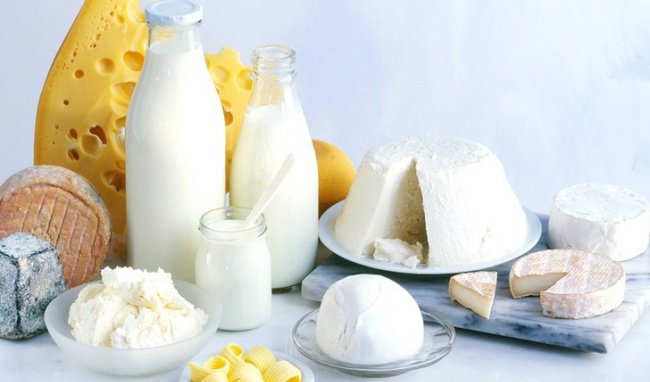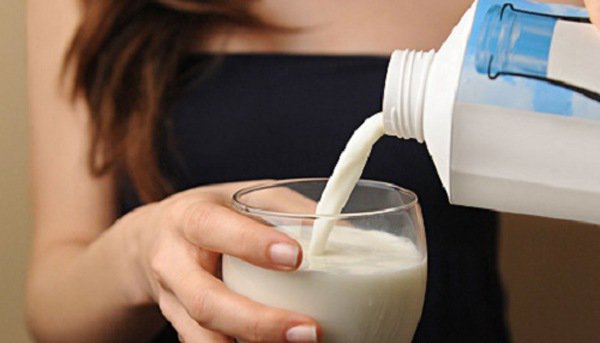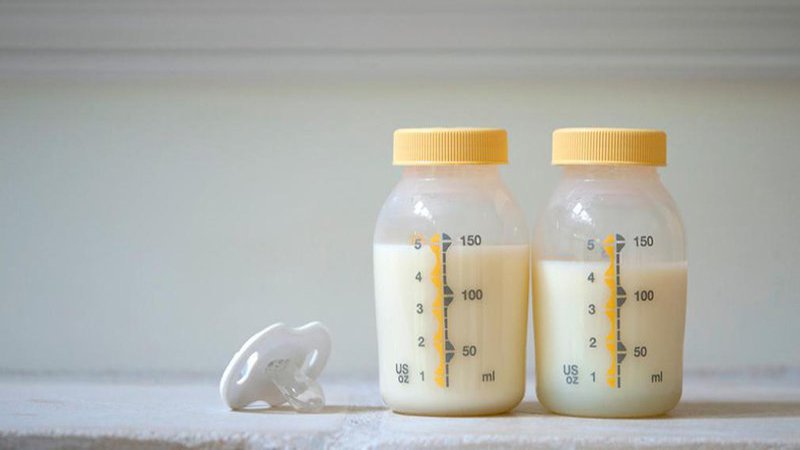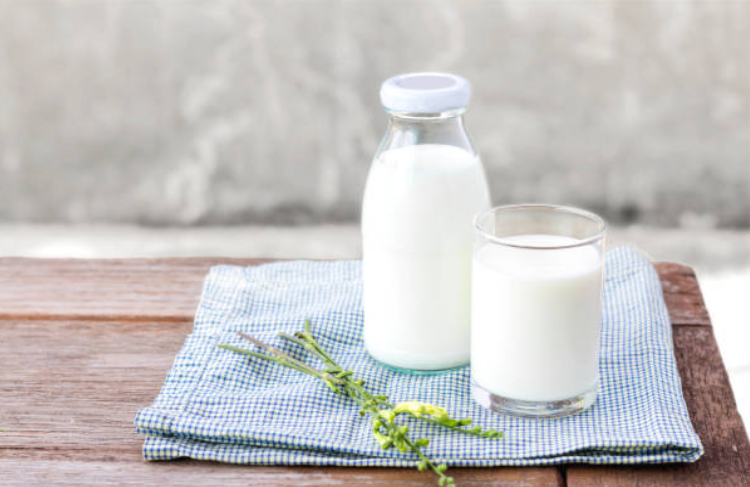Dairy foods: How much is enough?
This is an automatically translated article.
Dairy foods have long been known for their role in bone health, but research over the past decade has demonstrated that consuming milk, yogurt, and cheese can protect us against heart disease and stroke, may reduce the risk of high blood pressure and some cancers, and may reduce the risk of type 2 diabetes. So how much dairy is enough?
1. Nutritional composition of milk
Milk contains nutrients that are good for health. Milk contains several types of complete proteins, which means it contains all the amino acids needed for good health. Milk also contains other vitamins and minerals that other foods provide in limited amounts.
One cup of fortified whole milk:
Calories: 149 Protein: 7.69 grams Carbohydrates: 11.7 grams Fat: 7.93 grams Calcium: 276 milligrams Vitamin D: 3.7 international units (IU ) Vitamin B-12: 1.1 mcg Vitamin A: 112 IU Magnesium: 24.4 mg Potassium: 322 mg Folate : 12.2 IU Phosphorus: 205 mg Most dairy manufacturers add vitamin ingredients including: contains vitamins A and D. A person can tell if milk is fortified by reading each product's ingredient label. The label will list added vitamins, such as vitamin A palmitate and vitamin D-3, as ingredients.
Milk is a nutrient-rich drink that provides many nutrients that other beverages such as sports drinks, soft drinks...
Dairy foods are a natural source of 10 essential nutrients including calcium, potassium, phosphorus, magnesium, carbohydrates, protein, vitamin A, riboflavin, vitamin B12 and zinc.
These nutrients are important for healthy blood and immune system, vision, muscle and nerve function, healthy skin, energy and growth and repair in all parts of the body. your body.
Dairy foods - a good source of calcium Milk, cheese and yogurt provide convenient and easily absorbed sources of calcium, contributing about 60% of the calcium we eat.
One cup of fortified whole milk:
Calories: 149 Protein: 7.69 grams Carbohydrates: 11.7 grams Fat: 7.93 grams Calcium: 276 milligrams Vitamin D: 3.7 international units (IU ) Vitamin B-12: 1.1 mcg Vitamin A: 112 IU Magnesium: 24.4 mg Potassium: 322 mg Folate : 12.2 IU Phosphorus: 205 mg Most dairy manufacturers add vitamin ingredients including: contains vitamins A and D. A person can tell if milk is fortified by reading each product's ingredient label. The label will list added vitamins, such as vitamin A palmitate and vitamin D-3, as ingredients.
Milk is a nutrient-rich drink that provides many nutrients that other beverages such as sports drinks, soft drinks...
Dairy foods are a natural source of 10 essential nutrients including calcium, potassium, phosphorus, magnesium, carbohydrates, protein, vitamin A, riboflavin, vitamin B12 and zinc.
These nutrients are important for healthy blood and immune system, vision, muscle and nerve function, healthy skin, energy and growth and repair in all parts of the body. your body.
Dairy foods - a good source of calcium Milk, cheese and yogurt provide convenient and easily absorbed sources of calcium, contributing about 60% of the calcium we eat.

Sữa, pho mát, sữa chua đóng góp 60% lượng canxi bạn hấp thụ
Few foods provide as much absorbable calcium per serving as dairy does. Foods such as bone-in canned fish, green leafy vegetables, nuts like almonds, whole grains and legumes also contribute calcium to the diet, but in much smaller amounts than foods from milk.
The following dairy foods contain the same amount of calcium as one serving of milk, yogurt or cheese
100g shelled almonds 60g canned sardines 1/2 cup canned pink salmon with bones 100g beans supplements (check labels because calcium levels vary) For people who can't or are intolerant of dairy foods, substitutes like soy, rice, or other beverages with at least 100 mg of fortified calcium Supplements over 100ml may be appropriate.
The following dairy foods contain the same amount of calcium as one serving of milk, yogurt or cheese
100g shelled almonds 60g canned sardines 1/2 cup canned pink salmon with bones 100g beans supplements (check labels because calcium levels vary) For people who can't or are intolerant of dairy foods, substitutes like soy, rice, or other beverages with at least 100 mg of fortified calcium Supplements over 100ml may be appropriate.
2. Some benefits of milk
2.1. Milk and bone health Milk contains nutrients like phosphorus, magnesium, vitamin D and protein. Calcium is an essential mineral. The calcium in milk helps build strong bones and is needed for other functions, such as muscle contraction and nerve transmission. Dairy products are a good source of calcium, and this is one of the main reasons experts recommend that people consume milk. Milk also contains other nutrients important for bone health, such as phosphorus, magnesium, vitamin D, and protein.
Without enough calcium, a person can be at risk for osteoporosis, which makes bones weak and prone to fracture. The National Osteoporosis Foundation explains that people need enough calcium and vitamin D to prevent bone loss and osteoporosis.
2.2. Milk, Saturated Fats and Heart Health Saturated fats are found in full-fat dairy products such as whole milk, butter, and cream. Saturated fats are also found in meat, some processed foods, and coconut and palm oils.
The American Heart Association (AHA) believes that saturated fat can lead to high cholesterol and heart disease. As a result, many full-fat dairy products do not appear in heart-healthy dietary recommendations. Experts recommend that people choose fat-free or low-fat dairy products to get calcium without the saturated fat. The National Heart, Lung, and Blood Institute also recommends that people choose low-fat or fat-free dairy products as part of a healthy diet.
2.3. Diabetes and dairy A person can try the Mediterranean diet to reduce the risk of type 2 diabetes. The American Diabetes Association recommends a Mediterranean diet to reduce the risk of diabetes. type 2 and reduced A1C levels, an important indicator for blood sugar control. The Mediterranean diet emphasizes consuming healthy fats from olive oil and fish, as well as fruits, vegetables, whole grains, and moderate amounts of dairy.
Milk can fit into a healthy diet for many people with type 2 diabetes. Since everyone's body is different, it's best to talk to your doctor or dietitian about these options. Dietary recommendations for good glycemic control and diabetes management.
Without enough calcium, a person can be at risk for osteoporosis, which makes bones weak and prone to fracture. The National Osteoporosis Foundation explains that people need enough calcium and vitamin D to prevent bone loss and osteoporosis.
2.2. Milk, Saturated Fats and Heart Health Saturated fats are found in full-fat dairy products such as whole milk, butter, and cream. Saturated fats are also found in meat, some processed foods, and coconut and palm oils.
The American Heart Association (AHA) believes that saturated fat can lead to high cholesterol and heart disease. As a result, many full-fat dairy products do not appear in heart-healthy dietary recommendations. Experts recommend that people choose fat-free or low-fat dairy products to get calcium without the saturated fat. The National Heart, Lung, and Blood Institute also recommends that people choose low-fat or fat-free dairy products as part of a healthy diet.
2.3. Diabetes and dairy A person can try the Mediterranean diet to reduce the risk of type 2 diabetes. The American Diabetes Association recommends a Mediterranean diet to reduce the risk of diabetes. type 2 and reduced A1C levels, an important indicator for blood sugar control. The Mediterranean diet emphasizes consuming healthy fats from olive oil and fish, as well as fruits, vegetables, whole grains, and moderate amounts of dairy.
Milk can fit into a healthy diet for many people with type 2 diabetes. Since everyone's body is different, it's best to talk to your doctor or dietitian about these options. Dietary recommendations for good glycemic control and diabetes management.
3. 3. Recommended demand for milk and dairy foods
In building reasonable diets, foods are divided into groups such as: Lean meat and poultry, fish, eggs, tofu, nuts and seeds and legumes; Food from cereals; Fruit; Vegetables and legumes, and the last group is: Dairy foods including milk, cheese and yogurt.
Current dairy food group recommendations (including milk, cheese, yogurt or other dairy alternatives) for adults and children
Men:
19–70 years old in recommended amounts per day: 2 1⁄2 Over 70 years old with daily usage: 3 1⁄2 Female:
19–50 years old amount used per day: 2 1⁄2 Over 50 years old amount used per day: 4 Pregnant or lactating women: amount of use per day: 2 1⁄2
Boys:
2-3 years old amount of use per day: 1 1⁄2 4-8 years old amount of use per day: 2 9-11 years old amount of use per day: 2 1⁄2 12-18 years old amount of use per day: 3 1⁄2 girls:
2-3 years old amount of use per day: 1 1 ⁄2 4-8 years old amount used per day: 1 1⁄2 9-11 years old amount used per day: 3 12-18 years old amount used per day: 3 1⁄2 Other ways to include Adequate servings from the dairy food group include:
1 cup flavored pasteurized milk or powdered milk 1⁄2 cups (120mL) evaporated milk Experts also recommend that more than 50% of the amount consume from Dairy foods are reduced-fat varieties.
Current dairy food group recommendations (including milk, cheese, yogurt or other dairy alternatives) for adults and children
Men:
19–70 years old in recommended amounts per day: 2 1⁄2 Over 70 years old with daily usage: 3 1⁄2 Female:
19–50 years old amount used per day: 2 1⁄2 Over 50 years old amount used per day: 4 Pregnant or lactating women: amount of use per day: 2 1⁄2
Boys:
2-3 years old amount of use per day: 1 1⁄2 4-8 years old amount of use per day: 2 9-11 years old amount of use per day: 2 1⁄2 12-18 years old amount of use per day: 3 1⁄2 girls:
2-3 years old amount of use per day: 1 1 ⁄2 4-8 years old amount used per day: 1 1⁄2 9-11 years old amount used per day: 3 12-18 years old amount used per day: 3 1⁄2 Other ways to include Adequate servings from the dairy food group include:
1 cup flavored pasteurized milk or powdered milk 1⁄2 cups (120mL) evaporated milk Experts also recommend that more than 50% of the amount consume from Dairy foods are reduced-fat varieties.

Lượng sữa mỗi người nên tiêu thụ phụ thuộc nhiều vào lứa tuổi, giới tính
Contrary to popular belief, consuming three to four daily servings of dairy foods, such as milk, yogurt, and cheese, as part of a balanced diet is not associated with increased weight gain. weigh. What's more, including three to four daily servings of these dairy foods in a controlled kilojoule diet can help accelerate weight and body fat loss, improving retention. muscle and reduce waist circumference.
Most people need to cut back on foods that are not in the food groups. These foods are referred to as junk foods. Examples of these foods include: chips, cakes and muffins, soft drinks, alcoholic beverages, meat pies, cookies, cakes, ice cream, high-fat takeout and confectionery. Swapping these foods for milk, yogurt, and cheese is one way to increase consumption of the dairy food group.
Most people need to cut back on foods that are not in the food groups. These foods are referred to as junk foods. Examples of these foods include: chips, cakes and muffins, soft drinks, alcoholic beverages, meat pies, cookies, cakes, ice cream, high-fat takeout and confectionery. Swapping these foods for milk, yogurt, and cheese is one way to increase consumption of the dairy food group.
4. Some ways to help increase your milk intake in your daily diet
Dairy foods are convenient and versatile, making them easy to include in a healthy and balanced diet. With a wide variety of dairy foods available, enjoying your recommended amount each day is easy.
Eat a bowl of fruit and yogurt for breakfast or after a workout. Add cheese to salads or sandwiches. For an energizing fruit smoothie, mix with some fruit, yogurt, and milk. Grate parmesan or mozzarella cheese over pasta dishes. Drink a glass of warm milk in the evening. Please regularly monitor Vinmec website (www.vinmec.com) to update useful health care information and leave information when you need medical advice and support!
Eat a bowl of fruit and yogurt for breakfast or after a workout. Add cheese to salads or sandwiches. For an energizing fruit smoothie, mix with some fruit, yogurt, and milk. Grate parmesan or mozzarella cheese over pasta dishes. Drink a glass of warm milk in the evening. Please regularly monitor Vinmec website (www.vinmec.com) to update useful health care information and leave information when you need medical advice and support!
Please dial HOTLINE for more information or register for an appointment HERE. Download MyVinmec app to make appointments faster and to manage your bookings easily.
Reference source: nutritionaustralia.org
This article is written for readers from Sài Gòn, Hà Nội, Hồ Chí Minh, Phú Quốc, Nha Trang, Hạ Long, Hải Phòng, Đà Nẵng.





